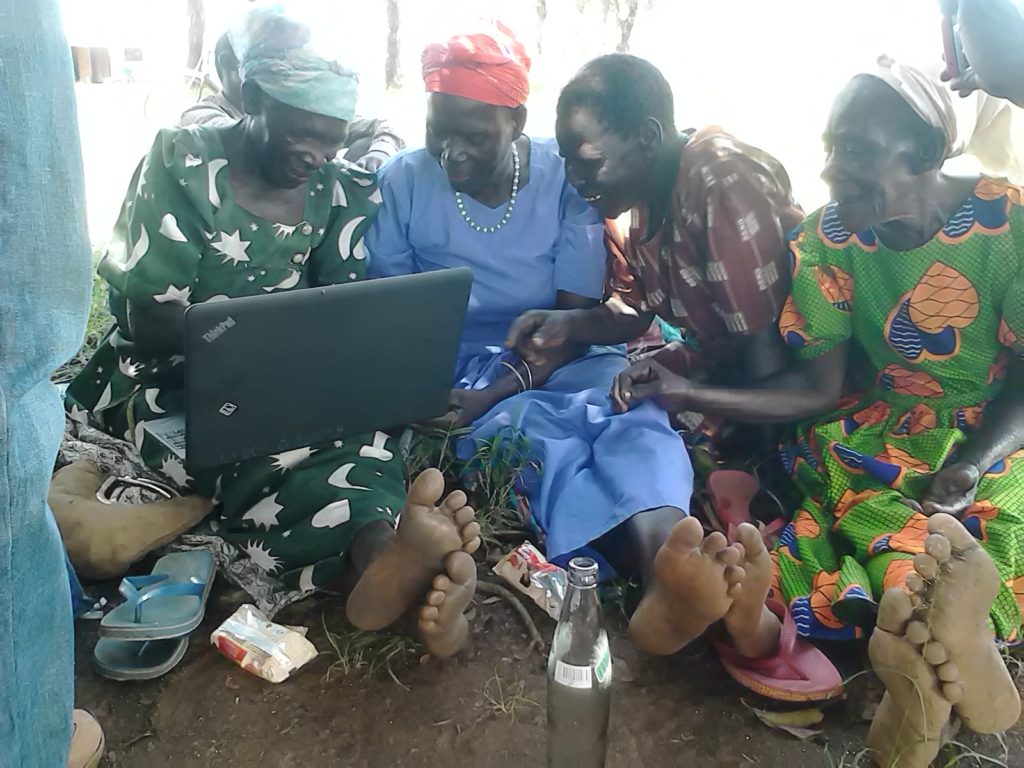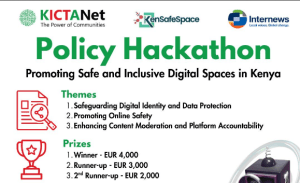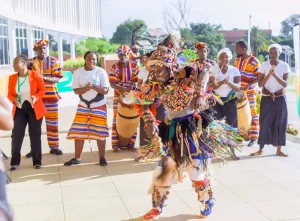State of Connectivity
One of the main priorities of the Government of Kenya is the attainment of Kenya’s Vision 2030 development goals and objectives through the provision of local and international connectivity across the country and region, and the development of in-country solutions. The government has prioritized the expansion of information and communication technology (ICT) capacity as a central pillar.
According to the second quarter sector statistics released by the Communications Authority (CA) for the period 1st October – 31st December 2022, mobile data/internet subscriptions were 47.76 Million, of which 66.8 per cent were on mobile broadband.
The penetration of smartphones stood at 60.2%, against a total population of 49.4 Million at the end of 2022. Mobile sim subscriptions stood at 65.7 million as of December 2022, representing a penetration rate of 133.1 %. The statistics remain unclear because a penetration rate above 100 per cent indicates that some users have more than one mobile subscription. It is important to adopt a multistakeholder approach in the collection of data towards connectivity solutions that fit the African context.
Kenya currently has 6 submarine fibre cables connecting it to the world (SEACOM, TEAMS, EASSy, LION2, DARE1, PEACE), with most internet users concentrated in urban areas. Despite this heavy strategic investment towards improving connectivity, many rural areas have not benefited from this high-capacity bandwidth due, in part, to poorly developed infrastructure at the last mile needed to move capacity where it is needed; digital infrastructure, roads, and electricity.
A significant portion of the population remains unconnected due to various reasons:
- Lack of investment in digital infrastructure (coverage gap)
- Access to spectrum
- Affordability of devices and data bundles
- Gender digital divide
- Digital illiteracy (usage gap)
Last-Mile Connectivity Roundtable
KICTANet actively participated in a last-mile connectivity roundtable convened by The Association for Progressive Communication (APC) and the International Telecommunication Union (ITU) in collaboration with the Digital Access Programme of the UKAID.
The event brought together community practitioners and stakeholders in the last-mile connectivity sector. The workshop, which took place on 1st and 2nd March 2022 at Strathmore University, unpacked issues around infrastructure, local content, and capacity building, all critical components in the deployment and sustainability of community networks as complementary access models.
KICTANet is founded on multistakeholderism and embraces engagement with people and institutions interested and involved in ICT policy and regulation. As part of this mission and through its community networks program, KICTANet participated in the roundtable discussions, supporting community networks through ecosystem mapping, unpacking challenges to stakeholders and creating capacity for ICT accessibility, a missing component in the community network ecosystem.
This event was timely and KICTANet shared our work supporting Community Networks across Africa in institutional strengthening, knowledge management, capacity building, policy advocacy, technology, innovation and sustainability, and inclusion of women and gender-diverse persons.
KICTANet is also operating the largest mesh network in Africa – the Angaza Community Network that targets a population of 600,000 in Mathare slums and its surrounding (Eastern part of Nairobi). Angaza Community Network is a free community WiFi project that seeks to connect Africa’s most vulnerable and marginalized communities by partnering with governments, development partners, businesses, civil society, and local communities to shift resources for good causes.
An ICT Authority of Kenya (ICTA) representative presented the government’s plan for rolling out the digital superhighway. The project seeks to strengthen the nation’s ICT backbone by increasing the fibre network coverage across the country, reducing the cost of internet connectivity, enhancing the delivery of e-Government services, and enhancing health, agriculture, MSMEs and revenue collection via automation of VAT systems.
The programme will involve the following:
- Laying out 100,000 Km of fiber optic across the country
- Installation of 25,000 public Wi-Fi hotspots
- Establishment of 1450 digital villages, smart hubs and studies (one per ward)
- Establishment of 3 data centres
- Cybersecurity management
ICTA iterated that there is room for community networks to tap into the 100,000 Km of fibre and invited collaboration in the roll-out of public hotspots, and capacity building, especially around the digitization of 5,000 E-services.
Community Networks are currently using license-exempt spectrum in the 2.4GHz and 5.0GHz bands. On the license-exempt spectrum, the Communications Authority of Kenya (CA) aims to:
- Review the guidelines on the use of Radiofrequency Spectrum by Short-range devices to amend EIRP limits for 2.4 and 5 GHz Wi-Fi for point-to-point (PtP) and point-to-multipoint (PtMP) use.
- Review options for lowering the barrier to use other license-exempt bands for PtP and PtMP use, including 24 GHz and 60 GHz.
- Expand the range of frequencies for license-exempt use, especially below 6 GHz band.
On access to Backhaul, CA aims for fibre-optic operators to be required to publish a standard reference offer (RAO) to ensure access, transparency, and non-discrimination in wholesale backhaul markets.
Discussions are ongoing on Universal Service Funds for startups as a subsidy for CNs to catalyze local initiatives and support bottom-up digital skills capacity building by groups and organizations within communities. This ties in with the authority’s USF Draft Strategic plan 2022-2026 to facilitate the establishment of a community network in each county of the underserved communities.
This is a series of our publications on Community Networks.
__________________________________________________________
Ms Catherine Kyalo is the KICTANet Africa Regional Coordinator for Community Networks under the APC-LOCNET initiative. She is passionate about community welfare and enjoys yoga to rejuvenate. LinkedIn | Twitter
![]()




